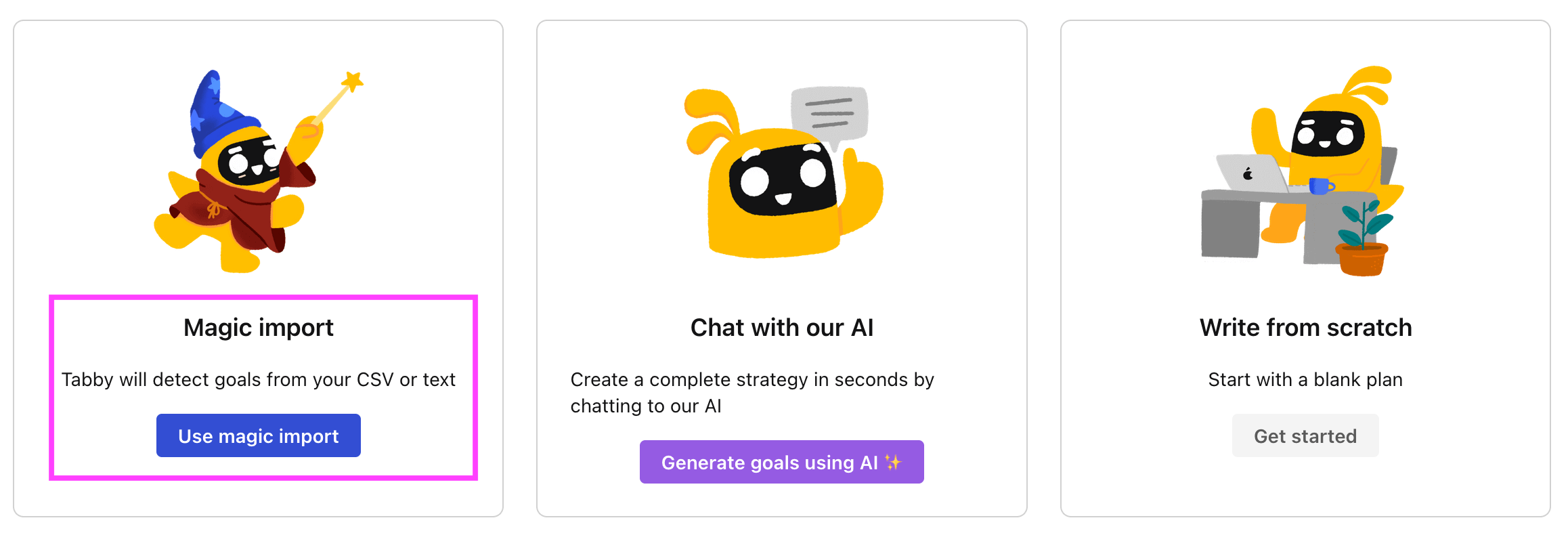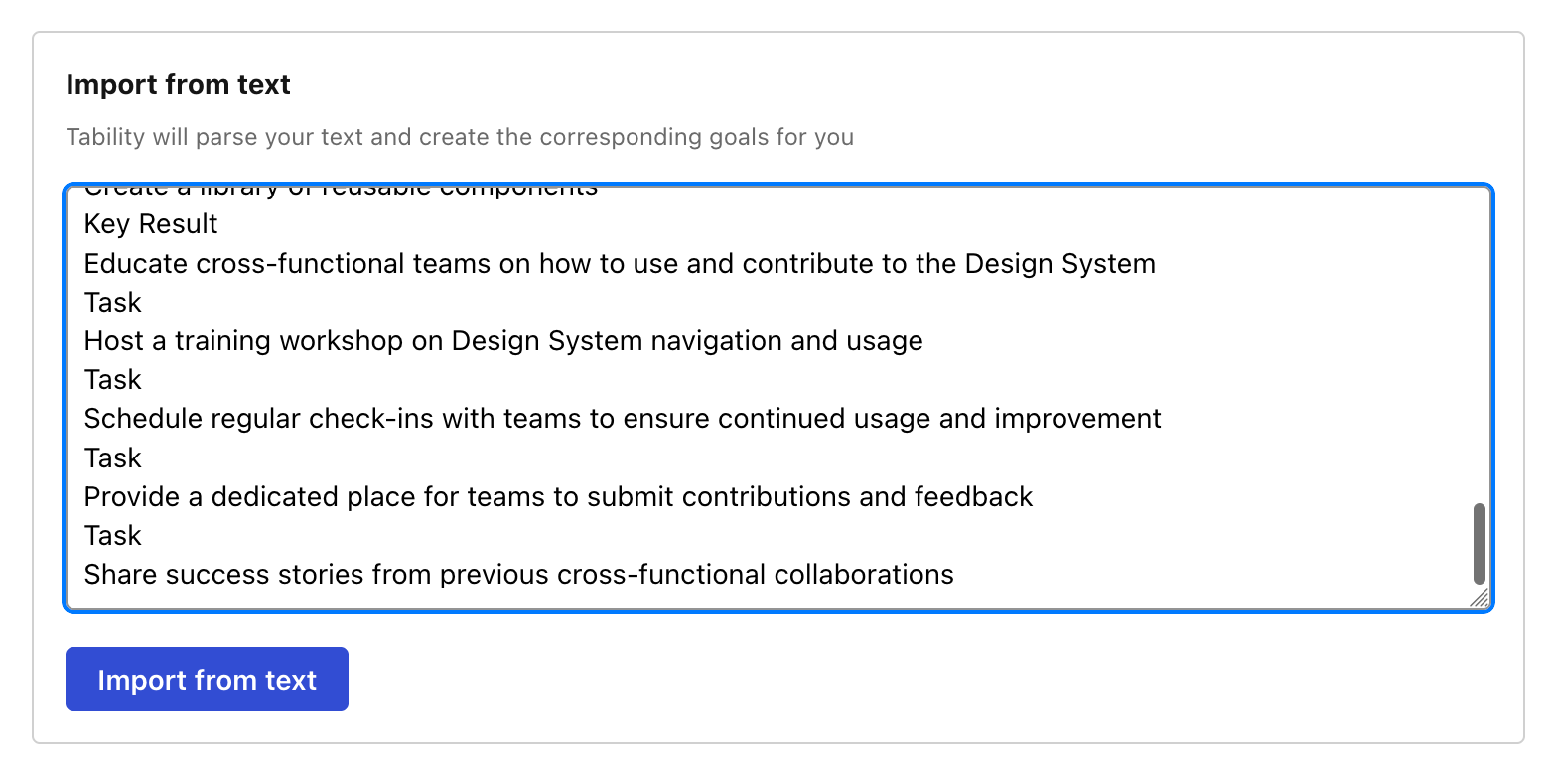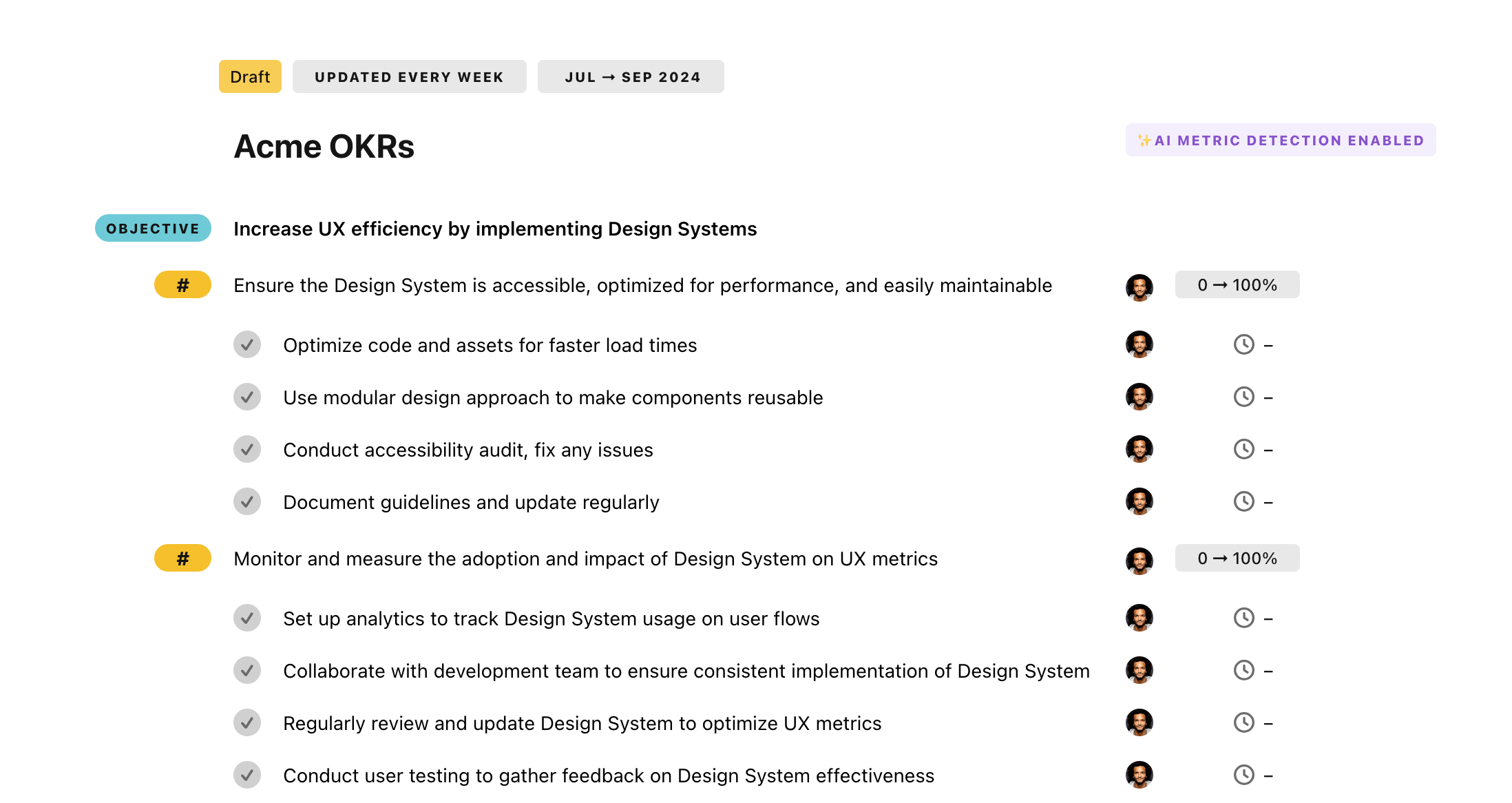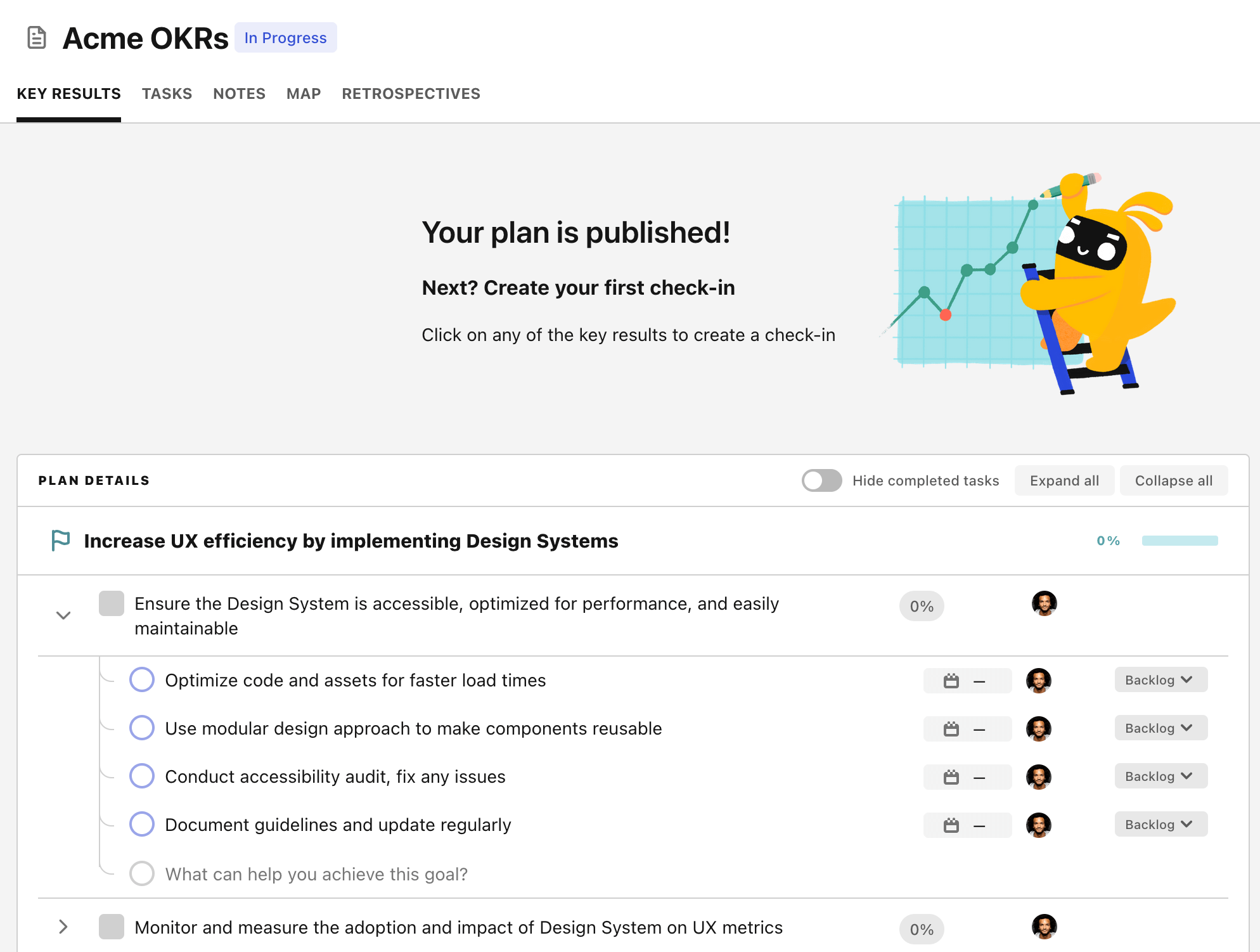OKR template to achieve 100% completion of all safety trainings
Your OKR template
The second objective seeks to increase comprehension of the training material, measured by raising the post-training evaluation score to 85%. The initiatives for this outcome include providing support after training, validating learning through quizzes, and generating engaging and comprehensive training materials.
The third outcome leans on improving the administrative aspects of these trainings by launching a safety training attendance tracking system. The system's launch is expected to boost the completion rate of safety trainings. Initiatives include researching existing tracking systems, testing and launching the new system, and designing a user-friendly interface.
Ultimately, the OKR encapsulates an end-to-end approach to safety training — from ensuring engaging and effective training sessions, validating comprehension of covered material, to developing a user-friendly system to document attendance and completion of these trainings.
ObjectiveAchieve 100% completion of all safety trainings
KRImplement interactive training sessions for 90% employee engagement
Schedule and administer interactive training sessions
Develop engaging, interactive training materials
Identify key skills and topics for the interactive training sessions
KRIncrease post-training evaluation score to 85% indicating comprehension
Provide post-training support and clarifications
Incorporate quizzes to validate learners' comprehension
Develop engaging and comprehensive training material
KRDevelop and launch a safety training attendance tracking system
Test and launch the new tracking system
Research existing safety training attendance tracking systems
Design a user-friendly interface for the system
How to edit and track OKRs with Tability
You'll probably want to edit the examples in this post, and Tability is the perfect tool for it.
Tability is an AI-powered platform that helps teams set better goals, monitor execution, and get help to achieve their objectives faster.
With Tability you can:
- Use AI to draft a complete set of OKRs in seconds
- Connect your OKRs and team goals to your project
- Automate reporting with integrations and built-in dashboard
Instead of having to copy the content of the OKR examples in a doc or spreadsheet, you can use Tability’s magic importer to start using any of the examples in this page.
The import process can be done in seconds, allowing you to edit OKRs directly in a platform that knows how to manage and track goals.
Step 1. Sign up for a free Tability account
Go tohttps://tability.app/signup and create your account (it's free!)
Step 2. Create a plan
Follow the steps after your onboarding to create your first plan, you should get to a page that looks like the picture below.

Step 3. Use the magic importer
Click on Use magic import to open up the Magic Import modal.
Now, go back to the OKR examples, and click on Copy on the example that you’d like to use.

Paste the content in the text import section. Don’t worry about the formatting, Tability’s AI will be able to parse it!

Now, just click on Import from text and let the magic happen.

Once your example is in the plan editor, you will be able to:
- Edit the objectives, key results, and tasks
- Click on the target 0 → 100% to set better target
- Use the tips and the AI to refine your goals
Step 4. Publish your plan
Once you’re done editing, you can publish your plan to switch to the goal-tracking mode.

From there you will have access to all the features that will help you and your team save hours with OKR reporting.
- 10+ built-in dashboards to visualise progress on your goals
- Weekly reminders, data connectors, and smart notifications
- 9 views to map OKRs to strategic projects
- Strategy map to align teams at scale